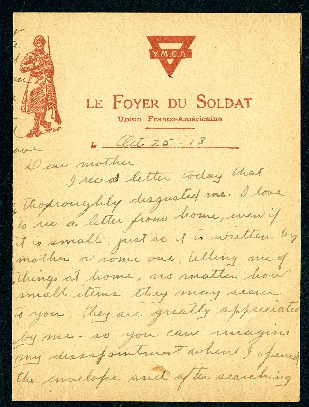Introduction
Paul B. Hendrickson was born on October 8, 1896 in Crawford County, Illinois. He attended school in Crawford County until 1905 when the family moved to Newell Township in Vermilion County, Illinois. Hendrickson then graduated Duncan Grammar School on April 28, 1911.
Hendrickson enlisted on April 12, 1917 in Danville, Illinois in the Band, Headquarters Co, 5th Illinois Infantry National Guard, serving in the first enlistment. The regiment started training at Camp Parker in Quincy, Illinois. From April 13 to June 1 the regiment billeted at the Quincy Armory in Quincy, IL. Then they relocated to tents in a park north of Quincy which became Camp Parker. Hendrickson entered the Fifth Illinois National Guard less than a week after war was declared on Germany by the United States on April 6, 1917.
At Camp Logan, Hendrickson learned techniques for fighting modern trench warfare, including some specialized techniques, such as signaling and mapmaking. While at Camp Logan, Hendrickson was organized into the 129th Infantry and combined with other Illinois regiments into the 33rd Division. The 33rd Division emblem, a yellow cross emblazoned upon a black disc, was created while at Camp Logan. The 33rd Division chose the yellow color partly because of the scarcity of all paint colors, but yellow.
After training at Camp Logan, the 33rd Division was sent to Europe, landing in Brest, France. Hendrickson was mainly in the Somme-Amiens and Meuse-Argonne sectors, and in the Verdun sector, and played with his regimental band throughout Europe the year following Armistice Day. During this entire period, both in training and in Europe, Hendrickson wrote letters and sent postcards, some with writing and some simply as images. He wrote to his parents, James Perry Hendrickson and Ethe Linda Hendrickson, often both during training and while Hendrickson was in Europe. He also wrote to a few female friends from home, namely Cecil Rife and Maude Anderson. Hendrickson would marry Cecil Rife in 1923. Along with his letters, Hendrickson kept a war diary while abroad.

